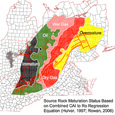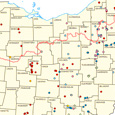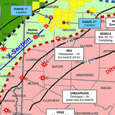Oil and gas well unitization: ODNR chief makes the final decision
Wednesday, June 18, 2014

SALEM, Ohio — Has an oil or gas land agent threatened you with “unitization” if you haven’t signed a lease, or have you been asked to join a bigger unit than what was originally in your lease?
What is it?
Unitization is a term used for horizontal drilling, where an area of land or “unit” is created for the development of the oil and gas under that land. Landowners of unleased tracts of land within that area can be compelled to join the contiguous unit.
Mandatory pooling is another form of forcing landowners to participate in the pooling for traditional oil and gas wells, but is generally used for a drilling unit of 40 acres or less.
“Generally speaking, forced unitization is a process similar to eminent domain where an oil and gas company can drill and produce the mineral rights of a mineral owner, even though the mineral owner does not lease or otherwise allow the oil and gas company to produce their mineral rights,” said Dick Emens, Emens and Wolper Law Firm.
ODNR hearings
Emens’ law firm is involved in representing landowners, including a Harrison County landowner, in recent unitization cases.
The week of June 9, the Ohio Department of Natural Resources held three unitization hearings, and since 2011, there have been 37 unitization applications to the ODNR.
Hearings have been held on tracts of land in Carroll, Harrison, Noble, Columbiana, Guernsey and Belmont counties.
Drilling plans
Gas and oil companies form units in the Utica and Marcellus shale to drill wells. The leases typically call for around 1,280 acres. The units can be larger or they can be smaller, depending on the company’s drilling plans.
A landman may approach a landowner to sign a lease, but they may not be able to come to terms. Or the landman may ask the landowner to increase the unit size in the original lease and the landowner may decline. Meanwhile, the company continues to lease the surrounding acreage.
Compelling participation
When it comes to an impasse, the company may look to the ODNR for help.
ODNR Public Information Officer Mark Bruce said the law is clear: The ODNR chief, currently Rick Simmers, makes the final decision on the matter.
According to the ODNR, an oil and gas company must have 65 percent of the unit already leased before asking the ODNR for assistance.
Bruce said the ODNR has not received an application with less than 80 percent of the unit already leased.
Test and plans
He said part of the application requires the company to prove the economic output and impact of the well. The company also has to prove the value of the well will outweigh the cost of drilling a well. In addition, the company has to show it made an effort to lease the acreage in question.
The ODNR also requires geological tests and plans for what the well could produce.
“We have to balance out everyone’s rights,” Bruce said. “Landowners may feel they have a right not to develop their mineral rights. However, we also have to consider whether the other landowners have the right to develop theirs. This process is about determining how to do that.”
As part of the process, the company must supply a list of the names of who was leased in the unit.
Then the ODNR gives notice to the unleased land and mineral owners of a hearing date.
The hearings are held in Columbus and are held 120 days from the company filing with the ODNR.
Unitization orders
Of the 37 unitization applications to the ODNR, the ODNR has issued only 10 orders. Nine applications have been withdrawn from the system, due to settlements with landowners or changes in the drilling plans.
And of the 10 orders that have been granted, Bruce said five of them have been revoked by the ODNR.
He explained the ODNR sets a time limit on the unit applications and if drilling doesn’t begin within that time limit, then the order is canceled.
Compensation
Bruce said some landowners believe if they force the company into filing an application for unitization with the ODNR, they lose their right to compensation, but that is not the case.
He cautions, though, the compensation package focuses more on royalty payments than bonus lease money.
Bruce said if the unit order is granted, ODNR attorneys draft an agreement and often it has a higher royalty percentage than other leases, but has a lower upfront money amount.
Surface disturbance
Another item that is often added is a surface disturbance clause. This means that the oil and gas can be obtained from the land but they can’t touch the surface without an agreement from the landowner.
“We heard from many landowners that’s what they wanted in the first place and the company refused — so they say no lease and end up here,” said Bruce.
Bruce said he expects the number of unitization hearings to increase as drilling activity increases in Ohio.
If landowners have questions about unitization, Bruce encouraged them to call the ODNR at 614-265-6922 for more details.




